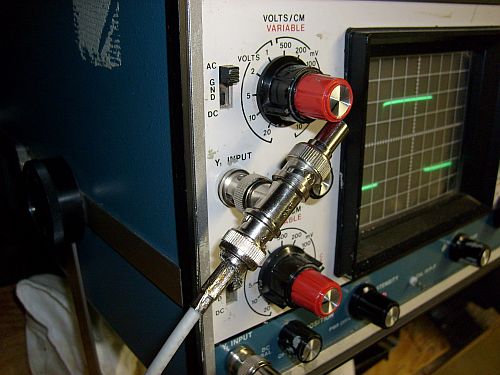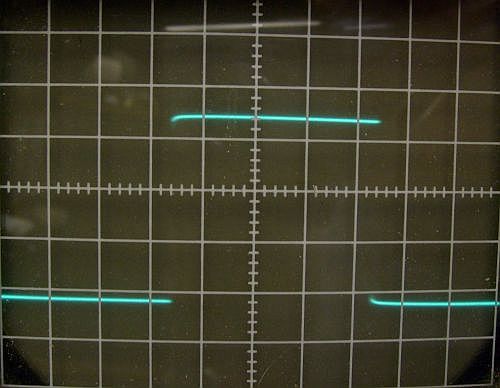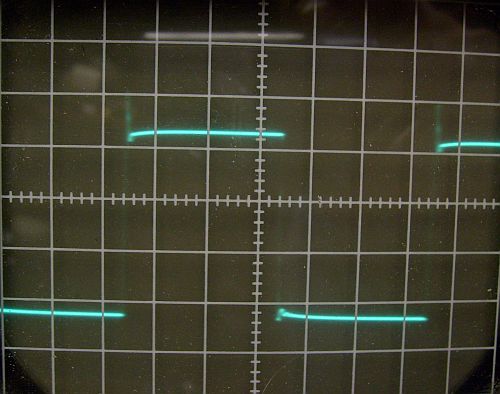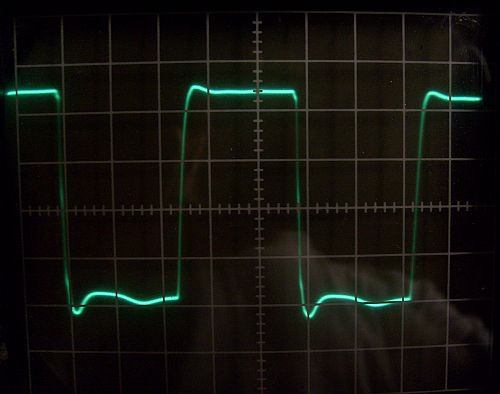| |
An oscilloscope is the one piece of equipment that I absolutely need, but unfortunately do not have. I had one briefly for a few years (a 1972, 10 MHz tube model that I got on eBay, it must have weighed 50 lbs and was enormous), but it blew up the moment that I finally was ready to use it. |
|
| | | |
| |
I've always wondered how clean my power supplies are, whether anything is oscillating, and which circuits could be improved. Also, there have been times when I wanted to do something, like make an upgrade or a "tweak", but I was worried that without a scope I wouldn't be able to determine if the change improved things, made them worse, or did nothing. I need a scope! |
|
| | | |
| |
In June of 2009, my wife was able to briefly bring home an ocsilloscope that belongs to a Fitchburg, MA middle school that they loaned her to use for developing curriculum for a music-math-science after-school program. I took advantage of the opportunity, and I measured all of my hifi gear. This page describes the oscilloscope, the probes I used, and the function generator, and includes photos of the 1 KHz, 10 KHz, and 100 KHz square waves used as the sources to test my hifi equipment. |
|
| | | |
| |
The results of my tests on my hifi gear are detailed on the following pages: |
|
| | | |
| |
|
|
| | | |
| |
The Oscilloscope |
|
| | | |
| |
The scope is a 1982 Heathkit 4550 dual trace 10 MHz unit, poorly calibrated I'm sure, that reportedly had been used very little due to the teachers' lack of knowledge on how to use it. You can see the front of it in the following photograph. |
|
| | | |
| |
Probes |
|
| | | |
| |
Although I had access to regular 1X - 10X probes, I made my own using a two-foot piece of the coaxial cable that I used for my interconnects (described here). I added a BNC connector to one end, and attached it to a BNC T-type connector with a 100 Ohm - 47 pF termination on the other side of the T. I then used the exposed wires at the other end of the cable to make the connections with the hifi equipment. |
|
| | | |
| |
 |
| | | |
| |
Function Generator |
|
| | | |
| |
After I got the ancient 1972 tube scope, I bought an Alert brand function generator kit that could produce sine, triangle, and square waves from 40 Hz to 100 KHz. I wanted to use this to provide a clean signal for testing the components. As soon as I finished the kit and turned on the scope to see how well the function generator worked, the scope went POP! right when I threw the switch. After that the function generator sat in a drawer waiting for an opportunity to be useful. |
|
| | | |
| |
I built the function generator from a cheap mail-order kit. I was somewhat skilled at building when I put it together, although not like I am now. As a result, the generator has a few issues. For example, the square wave generator has issues above 10 KHz (see below). |
|
| | | |
| |
I burned a 1 KHz tone (sine wave) to a CD from a wav file generated with the old CoolEdit software program, and then fed it to the scope. I used the calibrate knob on the scope so that the 1 KHz sine wave spanned 5 cm (squares on the the screen) peak to peak, horizontally and vertically, at 0.2ms/cm and 20mV/cm. I then hooked up the function generator to the scope and adjusted the frequency knob on the function generator until I had a 1 KHz wave (5 cm peak to peak at the same time/volts setting) and marked those spots for the function generator's frequency and volume settings so I could find it again. |
|
| | | |
| |
1 KHz Square Wave Source |
|
| | | |
| |
The following image shows a 1 KHz square wave at 2 V as outputted directly from the function generator to the scope (0.2 ms/cm and 500 mV/cm): |
|
| | | |
| |
 |
| | | |
| |
It's not great, but I think it is a decent 1 KHz wave. |
|
| | | |
| |
10 KHz Square Wave Source |
|
| | | |
| |
The following image shows a 10 KHz square wave at 2 V as outputted directly from the function generator to the scope (20 us/cm and 500 mV/cm): |
|
| | | |
| |
 |
| | | |
| |
Notice the little bit of overshoot or ringing on the leading edge. Some kind of oscillation, or because there is no load on the function generator other than the probe? This ringing is never seen in the output of any of the amps that use this signal as an input. |
|
| | | |
| |
100 KHz Square Wave Source |
|
| | | |
| |
The following image shows a 100 KHz square wave at 2 V as outputted directly from the function generator to the scope (2 us/cm and 500 mvV/cm): |
|
| | | |
| |
 |
| | | |
| |
Not bad considering that this is the limit for the generator. Not perfect, but more or less square. |
|
| | | |
| | | |



